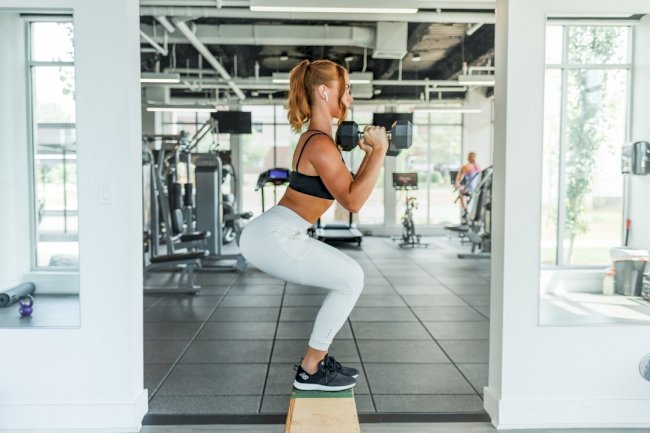How to Run Properly: Running Form Tips
Do you want to know how you can improve your running form? We are sharing some key tips of proper running form in this post. Know the proper running form tips.
Regardless of whether you're a fledgeling or simply need a boost, this is what you should think about appropriate running structure.
There's something else entirely to acing appropriate running structure than meets the eye. That is the reason each fussbudget who's taken up running knows a particular sort of internal monologue: 'Would it be advisable for me to be inclining more? Am I breathing profoundly enough? What amount of arm swing is excessive?'
Regardless of whether you're an incidental sprinter or a race fanatic, it pays to look for answers to those sorts of inquiries. Not exclusively can learning appropriate running structure bring down your hazard for injury; however, it may likewise prompt a PR. "The overall objective, particularly with significant distance running, is to run productively," says Chris Hoffman, a confirmed running trainer and originator of Recipe Running Center. "You're attempting to use as meagre vitality as could be expected under the circumstances, and any kind of superfluous arm and body developments or breathing can exhaust your body." (Related: How to Decide Your Running Stride—and Why It Makes a difference)
No compelling reason to crawl on your territory joggers to suss out precisely how you ought to be moving. Become familiar with the significant components of a legitimate running structure here.
The Correct Running Stance
"You need to consider keeping your ears over your shoulders." Point your look around 15-20 feet straight ahead. Attempt to stay away from a forward head pose (otherwise known as extending your jawline forward). It can put a strain on your neck, back, and shoulder muscles.
All things considered, keeping up the correct running stance includes a slight forward lean. Consider twisting at your lower legs instead of your hips, inclining forward around 10 degrees. Even more, motivation to pay attention to lower leg quality and portability. (Related: How Powerless Lower legs and Lower leg Versatility Influence the Remainder of Your Body)
The most effective method to Discover Your Step Length
The average sprinter won't have to worry about really apportioning their step length—yet it is imperative to discover a step that is not very long and not very short. Many individuals tend to overstride, says Sharma. On the off chance that your action is fun, that is a giveaway. "At the point when you're overstriding, that prompts a progressively vertical removal (otherwise known as bobbing), and that will advance more contact time with your foot on the ground, which is going to make your muscles need to work more earnestly," he says. As opposed to jumping forward, consider coordinating power into the ground and behind you once your foot lands.
Having excessively shy of a step is a significantly less fundamental misstep, yet if you speculate your stage is too short, one approach to discover is to film yourself running and check your means every moment. "By and large talking, for separation sprinters, quicker and increasingly effective sprinters are averaging around at least 180 stages for every moment," says Hoffmann. "More slow sprinters normal around 160 stages for every moment." So in case you're taking unquestionably more than that, you should stretch your step.
It's not in every case simple to self-right your running structure, especially with regards to walk length. Getting a walk investigation at a running facility can give you an outside point of view on which parts of your running structure you could enhance. "I figure the greatest thing to become acclimated to after some time—in any event, for myself—is chipping away at that stride length," says Hoffman. "Adjusting your step from the start will feel unnatural because it's not how you've been running for your entire life." (Related: How to Decide Your Running Stride—and Why It Makes a difference)
Where Foot Strike Comes In
Research isn't convincing on precisely how your foot ought to hit the ground for appropriate running method. While a few ways of thinking favour hitting the ground with the midfoot or front of the foot instead of the impact point, the creators of a 2017 audit of existing investigations contended that it hasn't been demonstrated to offer preferences with regards to running effectively or staying away from wounds. Indeed, even tip top competitors aren't really modifying their footstrike example to support the front or centre of the foot. An examination on long-distance runners at the 2017 IAAF Big showdowns found that most sprinters helped a rearfoot (impact point) strike design, including the best four completing men.
All that is to state, you do you. "There are many individuals out there discussing foot strike design—forefoot, midfoot, impact point strike," says Sharma. "Nonetheless, when I'm working with somebody, I'm progressively worried about whether there are any issues with the present example. Is the running proficient, are you getting harmed, and so on? Provided that this is true, that is the point at which we should think about creating a change."
Shouldn't something be said about Arm Swing?
Your step will affect your arm swing since your arm developments ought to typically reflect your legs (and the other way around), so it's a shockingly significant piece of appropriate running structure.
You need to keep up a 90ish-degree twist in your elbows. Also, that potato chip sign your secondary school track mentor utilized despite everything remains constant: To maintain a strategic distance from abundance pressure, freely cup your hands and imagine you're holding a chip between your thumb and index finger that you would prefer not to break, proposes Sharma.
Also, fight the temptation to overswing. "At the point when you're running, envision there's a divider perhaps a couple of crawls before you and you need to keep your arm swing behind that divider," says Sharma. "When you begin swinging your arms all the more forcefully forward, that advances over-striding, which you need to stay away from." (Related: 10 Reasons Your Neck and Shoulders Hurt While Running)
Step by step instructions to Inhale While Running
"Everyone's somewhat extraordinary with regards to breathing," says Hoffman. "For certain individuals, it's an inward breath for two seconds and an exhalation for two seconds, others are unique. The thought is to unwind and take in an effective way." That may be a more deep breath than you're utilized to—on the off chance that you notice hyperventilation-like puffs, that is an indication that you're not getting enough air and should hinder your breath.
"In through the nose, out through the mouth" is a conventional general guideline, however once more, it is anything but a one-size-fits-all arrangement. For additional points of interest, here are how to inhale while running.
Catch all that? It's a ton to monitor, yet all the parts of the legal running structure can assume a job in logging more sans injury miles.
What's Your Reaction?























